
Top 10 DSLRs in 2016
For decades, the DSLR (digital SLR) has been the top choice for anyone who wants to take their photography to the next level. Whether you’re a beginner or a pro, a DSLR offers three key ingredients: manual controls, excellent picture quality and interchangeable lenses.
Mirrorless cameras are another option of course. They’re smaller, mechanically simpler and, like DSLRs, they take interchangeable lenses. If you want to know more about how they compare, . Or, if you want to know more about different camera types in general, check out our step-by-step guide: What camera should I buy?
A DSLR is still the cheapest way to get a camera with interchangeable lenses and a viewfinder (entry-level mirrorless cameras don’t have viewfinders) and, at the other end of the scale, almost all professional sports, press and wildlife photographers choose full-frame DSLRs over every other camera type.
In between are a whole range of digital SLRs aimed at different users, different levels of experience and different budgets. Here’s our pick of the standout DSLR cameras you can buy right now:
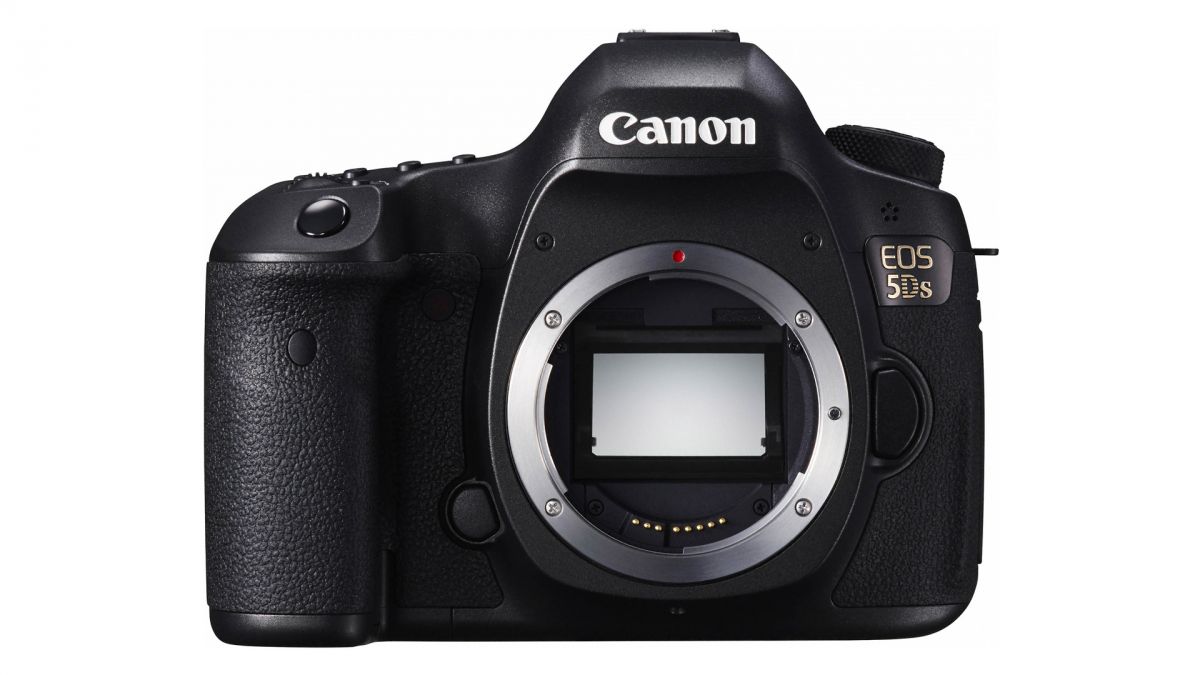
1. Canon EOS 5DS
Proof that more can mean better: the 5DS sets a new standard for DSLR photography
Sensor: 36 x 24mm CMOS | Megapixels: 50.6 | Autofocus: 61-point AF, 41 cross-type | Screen type: 3.2-inch, 1,040,000 dots | Maximum continuous shooting speed: 5fps | Maximum video resolution: 1080p | User level: Expert
Incredible resolving power Not that expensive considering Huge files, especially raw files Demands the best lenses
With 50.6 million effective pixels, the 5DS is by far the highest resolution full-frame DSLR on the market. The same goes for the 5DS R, which is identical to the 5DS, but features an anti-aliasing cancelation filter over the sensor to help resolve a little more detail. Pixel-packed sensors can be compromised, but not here. Image quality is superb, with fantastic detail, well controlled noise and good dynamic range. The 5DS is now the benchmark for full-frame image quality, but it’s not quite perfect. There’s no Wi-Fi or Ultra HD video recording, and huge image file sizes necessitate decent memory cards and a fast computer. The 5DS out-resolves any other full-frame camera on the market in our lab tests, including our previous number one DSLR, the Nikon D810.
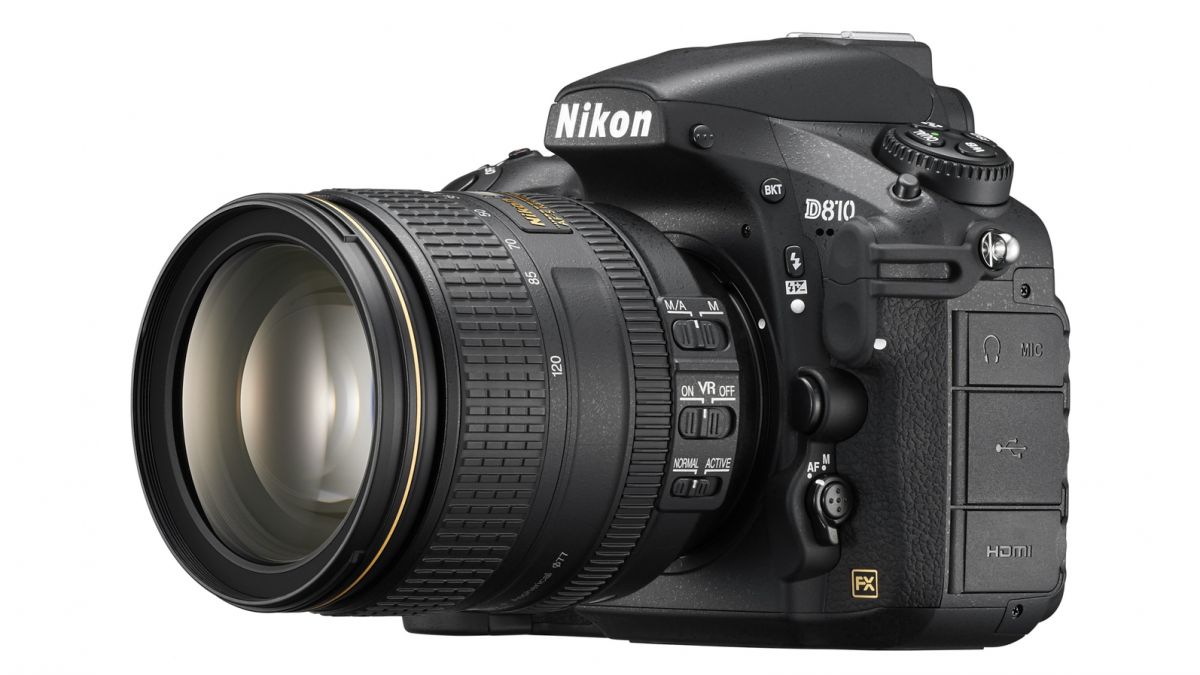
2. Nikon D810
Nikon’s full-frame favorite combines sky-high resolution with solid build and value
Sensor: full frame, 36.3Mp | Lenses: Nikon FX, DX (in crop mode) | Monitor: 3.2-inch, 1,229K dots | Viewfinder: Optical | Continuous shooting: 5fps | Movies: 1080p | User level: Expert
Handling and image quality Good value for a pro camera Beaten for resolution by the 5DS Modest continuous shooting speed
The full frame Nikon D810 has been knocked back into second place by the mighty Canon EOS 5Ds, but the Nikon is still a great buy. It’s built like a tank, it handles beautifully and it doesn’t cost the earth. It’s expensive compared to APS-C DSLRs, but for a pro camera it’s actually quite cheap, and Nikon has ditched the anti-aliasing filter usually placed in front of DSLR sensors in order to maximise its formidable resolution. If you’re into sports, action and wildlife photography, the Canon EOS-1D X and Nikon D4s have faster continuous shooting speeds, but neither can match the D810’s outright image quality and value for money.
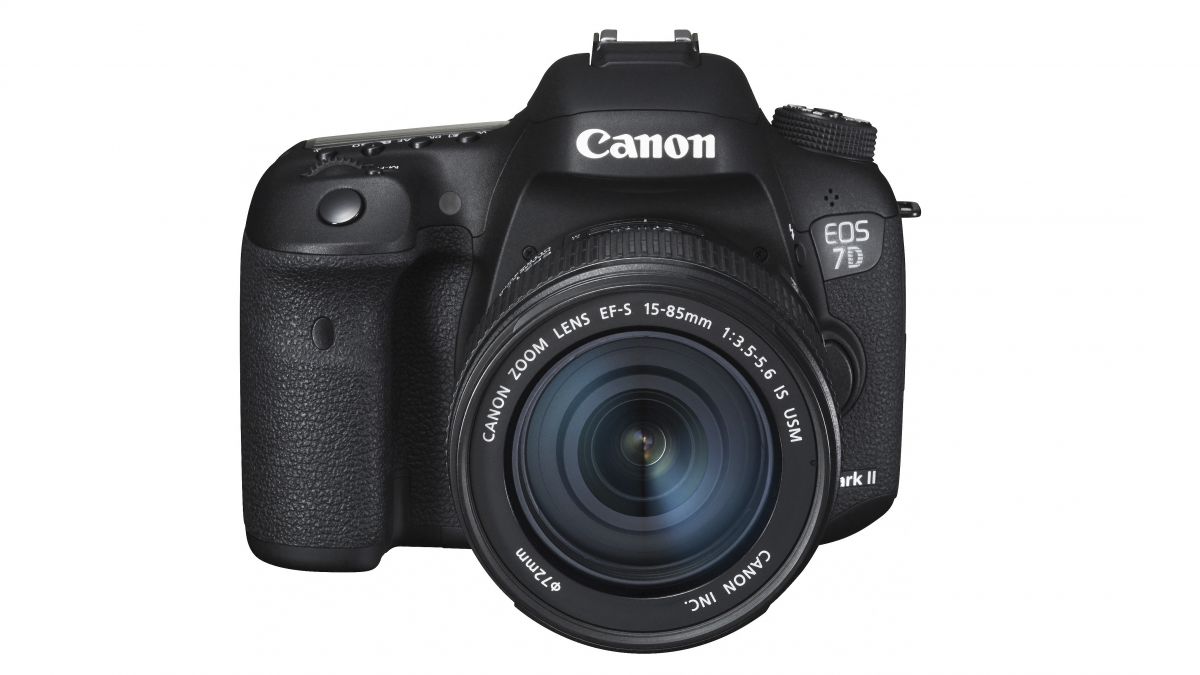
3. Canon EOS 7D Mark II
As fast as pro DSLRs but priced for amateurs, the 7D Mark II ticks all the boxes
Sensor: APS-C, 20.2Mp | Lenses: Canon EF-S, EF | Monitor: 3-inch, 1,040K dots | Viewfinder: Optical | Continuous shooting: 10fps | Movies: 1080p | User level: Expert
See more Canon EOS 7D Mark II deals
Tough build Hybrid AF and 10fps shooting Expensive for an APS-C camera Cheaper 760D has more pixels
We’ve mentioned the formidable Canon 1D X and Nikon D4s because they have very high continuous shooting speeds – that’s why they cost thousands. But then Canon launched the EOS 7D Mark II, a camera that brings 10fps shooting and a professional autofocus system to the amateur market. Now you can shoot action and sports like the pros, but at a price within the reach of enthusiasts. The 7D Mark II isn’t just a high-speed specialists, it’s a terrific all-round camera. It’s tough, with an alloy body and weather-sealed controls, it has a great sensor with an advanced dual-pixel hybrid autofocus system, and it’s powerful video camera too.
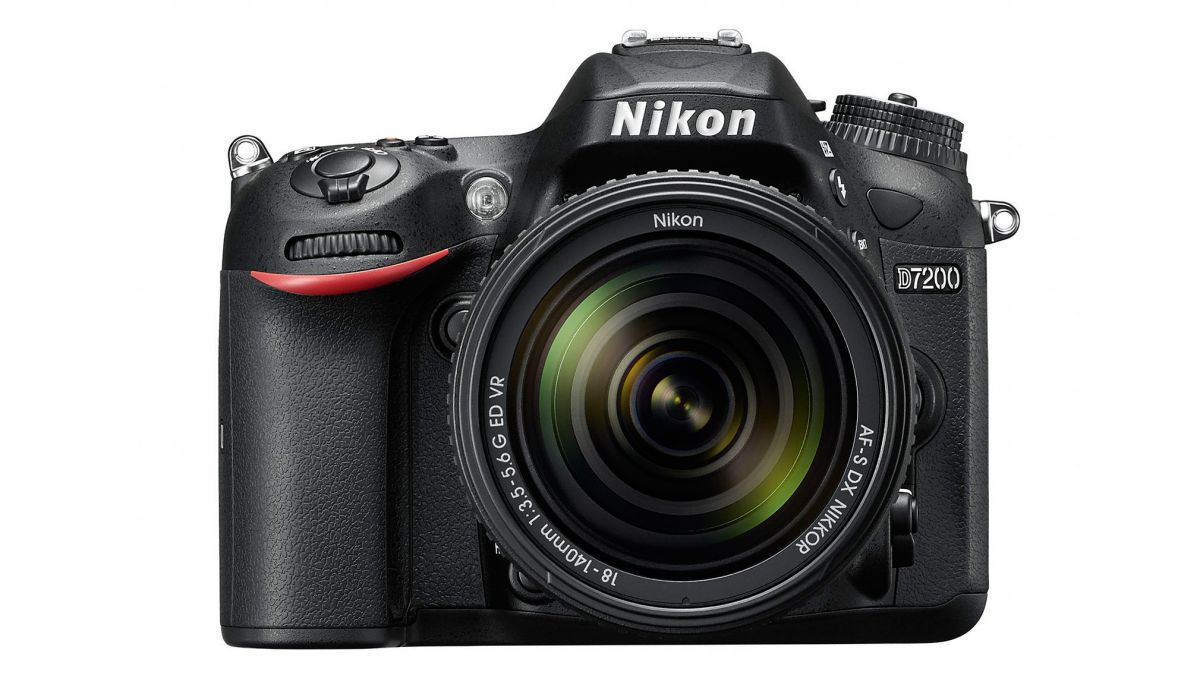
4. Nikon D7200
Versatile, powerful and capable of excellent results – perfect for enthusiasts
Sensor: APS-C, 24.2Mp | Lenses: Nikon DX, FX | Monitor: 3.2-inch, 1,229K dots | Viewfinder: Optical | Continuous shooting: 6fps | Movies: 1080p | User level: Intermediate
Excellent OLPF-free 24MP sensor Powerful 51-point AF system Soon to be outshone by the D500 6fps shooting merely average
Or if you want the quality but you don’t need the speed, take a look at the Nikon D7200. It’s a lot cheaper than Canon EOS 7D Mark II and uses Nikon’s latest 24-megapixel APS-C format sensor with no anti-aliasing filter to produce some of the sharpest images you’ll see outside of professional full-frame cameras. The D7200 doesn’t match the Canon’s sheer speed, but it can still shoot at 6 frames per second for up to 100 JPEG photos or 27 raw files, and it uses a 51-point autofocus system taken straight from Nikon’s pro DSLR range.

5. Sony A77 II
Super-fast AF and shooting speeds show the true potential of Sony’s SLT design
Sensor: APS-C, 24.3Mp | Lenses: Sony A-mount | Monitor: 3-inch articulating, 1,228K dots | Viewfinder: Electronic | Continuous shooting: 12fps | Movies: 1080p | User level: Expert
See more Sony A77 Mark II deals
12fps continuous shooting Fast phase detection AF in live view Sony SLT range’s future uncertain Electronic not optical viewfinder
And don’t overlook Sony’s Alpha DSLTs, or ‘Digital Single Lens Translucents’. These look and handle like regular DSLRs but use a fixed mirror and an electronic viewfinder instead. This means the camera’s phase-detection autofocus system is available all the time and you don’t have to swap to a slower sensor-based AF system in live view mode. The range has been re-invigorated with A77 II update that brings super-fast autofocus, a swivelling screen and stunning 12 frame per second continuous shooting capability – though it’s still not clear how much longer Sony is going to be supporting the SLT camera range when it’s investing so heavily in its mirrorless cameras.
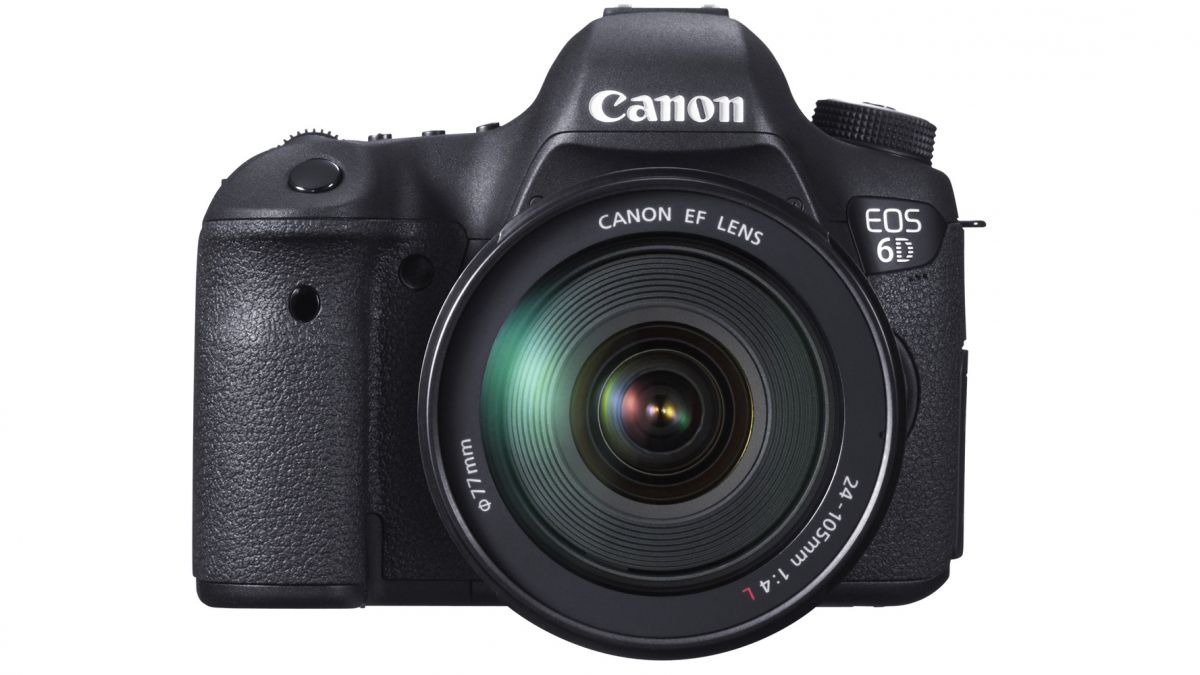
6. Canon EOS 6D
Full-frame on a budget – the 6D’s straightforward design has old-school appeal
Sensor: full frame, 20.2Mp | Lenses: Canon EF (not EF-S) | Monitor: 3-inch, 1,040K dots | Viewfinder: Optical | Continuous shooting: 4.5fps | Movies: 1080p | User level: Expert
Great value for a full frame camera No fuss features Basic autofocus system Only 4.5fps continuous shooting
But don’t assume you need the latest tech to get a good camera. It’s tempting to chase the biggest numbers and newest gadgets when choosing a camera, but sometimes the simple things count for more. The EOS 6D is Canon’s cheapest full-frame DSLR, and compared to some of the other cameras around it, it’s a simple-minded old-school relic. But that full-frame sensor delivers a subtle quality and a sense of depth that you only get from a big sensor, and the no-fuss specs will appeal to quality-conscious photographers who like to keep things simple.
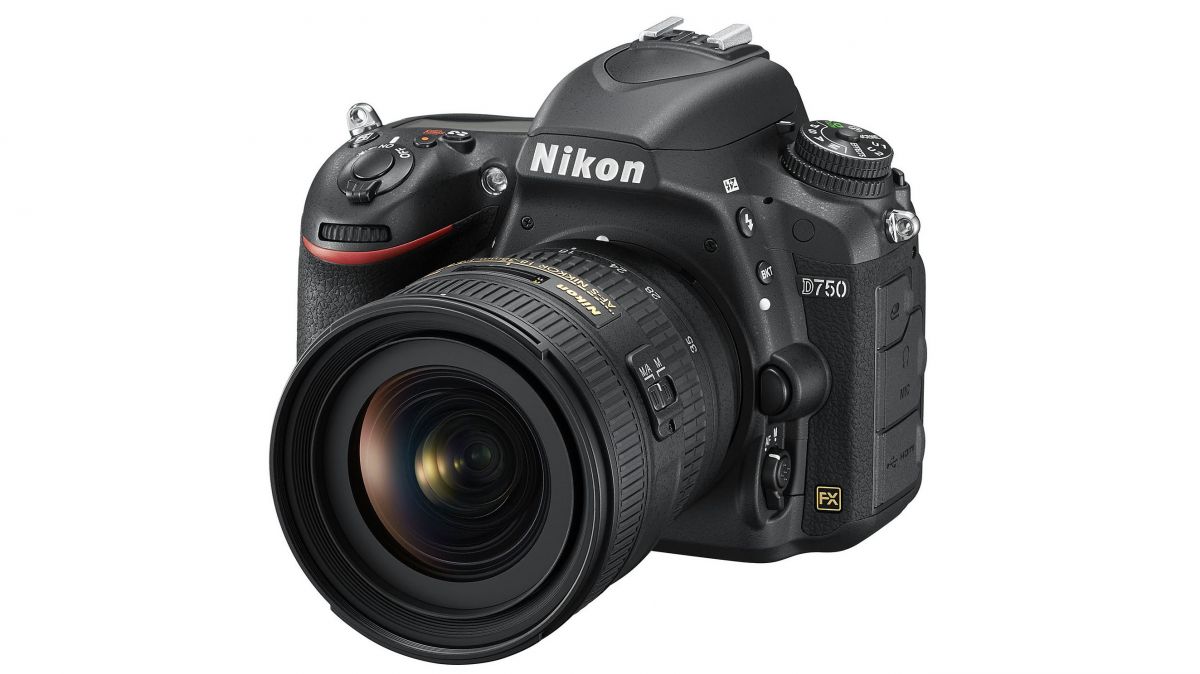
7. Nikon D750
A full-frame DSLR with performance, versatility and value
Sensor: full frame, 24.3Mp | Lenses: Nikon FX, DX (in crop mode) | Monitor: 3.2-inch tilting, 1,229K dots | Viewfinder: Optical | Continuous shooting: 6.5fps | Movies: 1080p | User level: Expert
Good 24Mp full frame sensor Tilting screen, handy for video Nikon D610 is cheaper still Nikon D810 is not a whole lot more!
Still in full-frame territory, if the price of the D810 at the top of our list is too rich for your blood, consider the Nikon D750 instead. It doesn’t have that magnificent 36-megapixel sensor, but its 24-megapixel alternative still delivers top quality, especially at high ISO settings. The D750 is also a bit more versatile than the D810, with a faster 6.5fps continuous shooting speed, a handy tilting screen and a lower price – and you still get the enhanced autofocus system and Picture Control 2.0 options of the D810.
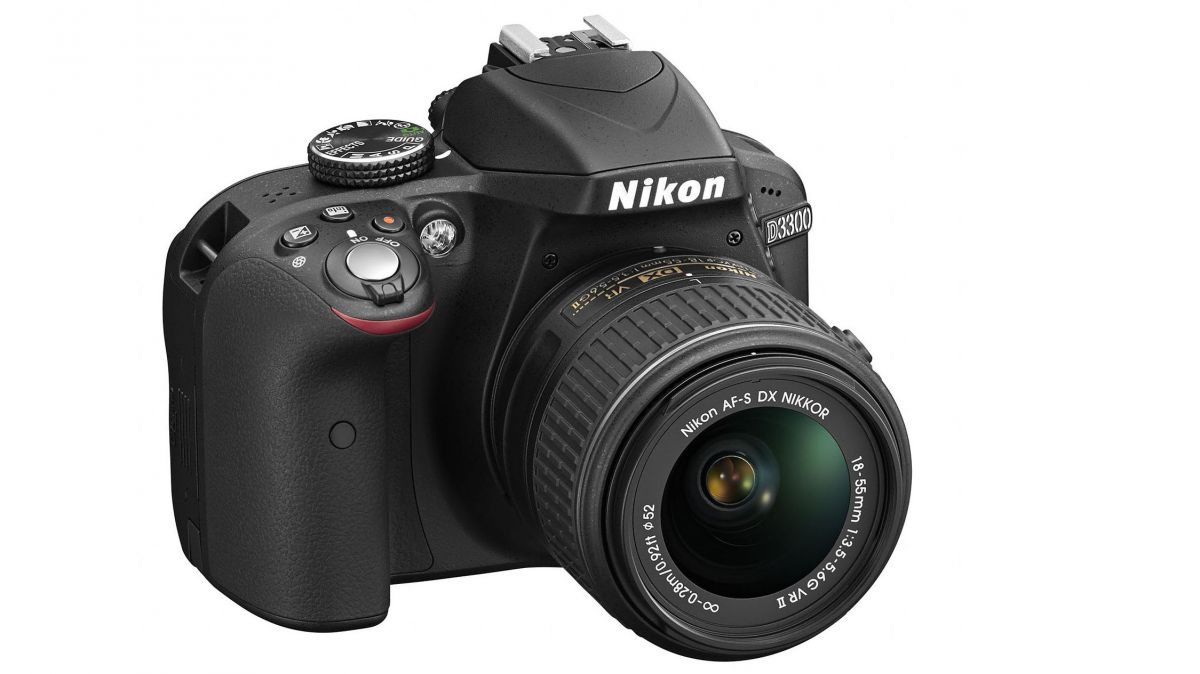
8. Nikon D3300
Cheap cameras don’t always bring compromise – the D3300 is basic but brilliant
Sensor: APS-C, 24.2Mp | Lenses: Nikon DX, FX | Monitor: 3-inch, 921K dots | Viewfinder: Optical | Continuous shooting: 5fps | Movies: 1080p | User level: Beginner
Terrific OLPF-free 24MP sensor Excellent value for money Basic external controls Maybe too small for some hands
At the opposite end of the spectrum, the D3300 is cheap as chips, has one of the sharpest APS-C sensors there is and a neat retracting kit lens. It’s proof that you don’t have to pay a fortune to get a great camera, and we say its sheer value for money makes it just as impressive as much more advanced (and much more expensive) alternatives. It has the same 24-megapixel non-antialiased sensor as the best of Nikon’s APS-C format DSLRs, and although the controls are designed to be simple for novices, in the right hands the little D3300 is a match for cameras costing far more.
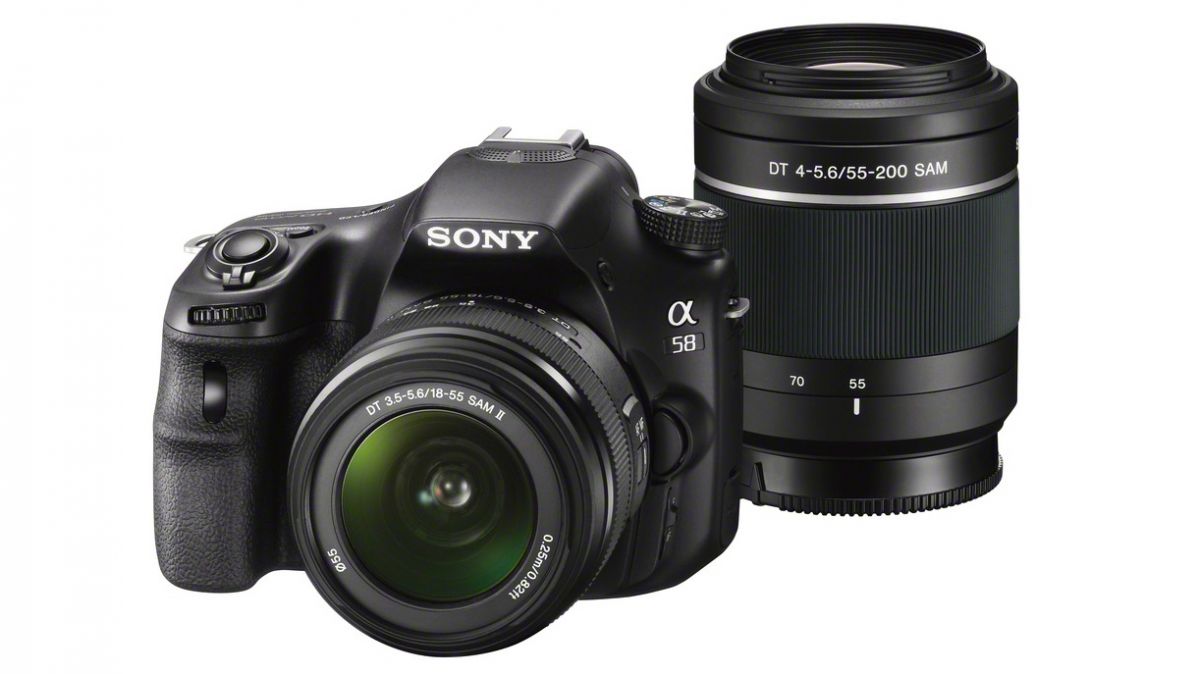
9. Sony A58
Sony’s bargain basement DSLR offers great value, especially with lens bundles
Sensor: APS-C, 20.1Mp | Lenses: Sony A-mount | Monitor: 2.7-inch tilting, 460K dots | Viewfinder: Electronic | Continuous shooting: 8fps | Movies: 1080p | User level: Beginner
Value for money with multi-lens kits 20Mp and 8fps continuous shooting Electronic viewfinder Not the best lens range
Meanwhile, for sheer value you can’t do better than the Sony A58. It’s the company’s cheapest DSLT and it’s been around for a little while, but the specs are still quite impressive, including a 20-megapixel APS-C sensor, 8fps continuous shooting and in-built SteadyShot image stabilization. Look out especially for twin-lens kits at a bargain price, and even triple-lens kits. It’s a great way to get kitted out with a starter camera system for the least possible money.
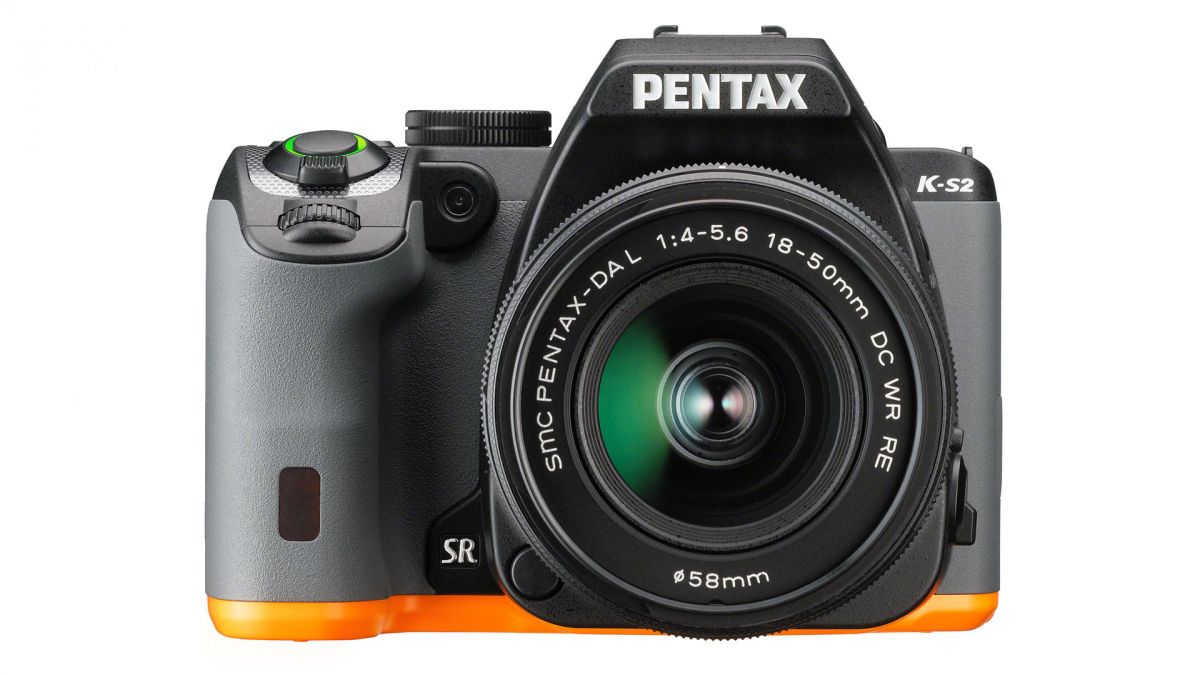
10. Pentax K-S2
A rugged and powerful alternative to Canon and Nikon DSLRs
Sensor: APS-C, 20.1Mp | Lenses: Pentax KA | Monitor: 3-inch articulating, 921K dots | Viewfinder: Optical | Continuous shooting: 5.4fps | Movies: 1080p | User level: Intermediate
Decent external controls Rugged weatherproof build Rough and ready 18-55mm kit lens Lens range good but not the best
And let’s not forget Pentax. The DSLR market may be dominated by Canon and Nikon, but Pentax is still turning out innovative and rugged DSLRs which are serious alternatives. The Pentax K-S1 and its novelty lamps is a bit odd, but the newer K-S2 is a proper, rugged DSLR for enthusiasts. Its weatherproof design makes it ideal for challenging outdoor photography, and even though Pentax bills it as a ‘family’ camera, its twin control dials, fully articulated LCD display and 20-megapixel non-antialiased sensor will appeal to more advanced shooters.
Source: techradar.com










































I agree. Still not having the need to trade my 6d, it really delivers great IQ from a light, durable body. If you don´t shoot sports this is a great way to go.
People are very easily sold on gimmicks that dont make you a better photographer. Tilting variable angle screens are one such item. Basic, or so called beginners DSLR cameras may have less features and the instant functionality of more expensive models up the range, but great images can still be had if you know what you are doing. It all depends what kind of photography you wish to do. Me, im not an action photographer so i dont need a zillion focus points or 20 fps and a lens faster than a bugatti veyron! Ive sold photos and had work published taken with a Nikon D3100. People think a better camera will improve their own ability. And dont be fooled by the removal of those low pass filters on some models. Unless you spend thousands on a new lens, you wont notice the difference! Its all very clever marketing designed to make you unhappy with your current camera. I am after a Nikon Df next, simply because its a beautiful camera that makes the whole photographic experience for me inspirational. I dont spend my life looking at image noise and dynamic range comparison charts.
I had a superhero-themed birthday party shoot where the parents had built a 'city skyline' on the floor and the kids were lying on it, posing like Superman or whatever character they were. The articulating viewfinder would have been VERY handy in this case, so I had to borrow another parent's Sony. This is the only time I have ever really needed the articulating screen, but it would be handy, even if it is a tad gimmicky.
Seems to be a paid article.
Samsung NX1 beats all those junks so called cameras.
I love me NEX6, cheap portable fast auto focus and shoot up to 10fps. The one thing I hate is not touch screen!!
These all are best dslr camera…
Samsung NX1 is a CSC, not a DSLR, hence why it isn't on the list…
I imagine there may have been some useful information on this page, but since I couldn't move the mouse without opening at least 2 half page advertisements…I decided to scroll down here just so I can tell them they suck..I'll get the info at Cnet or similar.
How ignorant do you need to be. Of course you will take a better photo when you can SEE the subject. Professional doctors did things differently 100 years ago as well, does that mean we should still use leeches. Photography is about capturing the moment, and we don't take the same lame compositions of yester-year.
Tilty flippy touchy screens should appear on more cameras and not just entry level, they are very handy
I've been experimenting with photography for the past couple of years with my Sony point and shoot and with a friend's Sony A300 DSLR. I am wanting to buy my own so that I can get more seriously into it and take some classes. I am interested in a Canon and my maximum budget is around $900 (I will probably get a kit). I am interested in nature, landscapes, portraits, motion pics, night pics, buildings, basically anything and for general use. I am still exploring what kind of photography I really like, but what I love is having bright and vivid colours in my pictures. What I didn't like about the Sony A300 that I was using was that the colours looked very dull to me and the resolution was not the greatest when I put my pictures up on my computer and blew them up. Someone told me that Canon has more vivid colours. Is this true?
Also, I am just learning about the different DSLR cameras, and I'm wanting to buy one that I can use for years to come and grow into, hopefully not needing to upgrade in a couple of years. So I was thinking of Canon 60D based on what I've read so far, or a Canon 600D. But I don't know if those would be the best fit. Can you please recommend a camera for my use and budget?
By the way, are Canon Rebel cameras considered entry-level DSLR cameras and are they considered good cameras? New models seem to come out very often.
No obvious compact A-Mount body beyond A65/A77 other than E-Mount (which has little 3rd party support). Sony have gone off the rails!
The most important part of the decision is looking at the system you are buying into. The lenses are way more important than the body. It is hard to know what you want when you are first starting out, but carefully consider what you are buying the camera for: are you taking photos of the kids? Are you shooting landscapes? Your needs determine the lenses and body you should be purchasing.
Clearly this article needs updating to include Camera of the Year; Sony A7Rii
I am not as stupid as to think it would take me a better photo, many "Pro photographers" have said in various youtube videos and reviews that they would like to see pull out screens on more advanced cameras. I have found it useful in some situations, I am not bothered about most stuff, I was still using manual film slr until I got my first dlsr only 2 years ago and I went for what is apparently a "top of the range entry level camera" that didn't matter to me what bracket it was put in, what mattered was I could afford it and it felt good in my hands and was basically regarded as a decent performer
Well said Dillan. I knew nothing when I got my first Nikon. Spent years driving my girlfriend nuts by waffling on about aperture, ISO and depth of field etc! I wouldnt like to go through it all again. Nice to pick up any old camera and get a decent shot without thinking!
Errr. Where can I get a 7Dmk2 for £418? I'll have two at that price. Six, even.
.
.
Dammit, it's a bad link to a second hand 7D mark 1…
Dear oh dear, i was simply trying to make the point that it doesnt matter what tools you use, its how you use them that matters. Lot of camera snobs these days that think by waving a 5d mk111 about will turn them into some kind of David Bailey. Lol
The article is incorrect about the a65 and a77. Both of those models are 24.3 megapixels. Also, although you MAY (or may not) find an a37 or a57 new, they have been discontinued by Sony. They do have a new entry level offering, the SLT-a58, boasting 5 frame per second and having an actual microphone input (3.5mm), which other offerings lack. That's important to me, since I do live band videos and other events. Of the current Sony offerings, the only other one that has a mic input is apparently the top-end, full-frame, a77. The a58 has 20.1 megapixels, which is more than sufficient for most uses. As to speed, for continuous shooting, which you need for fast sports action capture, the a77 is the fastest on Earth, shooting 12 frames per second at full 24.3 megapixel resolution. The a65 is nearly as fast, at 10 frames per second, again, at full 24.3 megapixel resolution. So, as of TODAY (10/09/2013), the only A-MOUNT (the primary standard Minolta, Konika-Minolta, Sony mount), there are only the four offerings, here listed in the order from lowest priced to top of the line: a58, a65, a77, a99. Sony does have two other primary lines: Their little cybersho deals, then the lighter-weight lens-interchangeable line utilizing their E-mount lenses. For more on current Sony stuff, just go to this link: http://store.sony.com/c/Alpha-…
Talk about making a camera for consumerism then say you want the df lol. I own the d3200, d5500, d750 and they all have great attribute. Articulating screens help so much with tripod work. Would you rather look at a small readout or a 3.2" screen? Or nothing at all? Using the camera in many situations show how excellent flipping screens are. The only thing the d3x00 does well is still subject photography. Nikon uses beautiful sensors, but the d3x00 usually can't keep up with fast moving subjects in low light. The d5500 is amazing in how small and well footed it is, until light dims. The d750 can be used anywhere any dslr can, and pulls a lot more data that's cleaner from any fx lens. When I give people samples, I show the kit lens so they can see and decide for themselves. No one chooses those soft pictures, and all opt for the "buggatti glass". You honestly sound like a defensive kid who is stuck with a d3100, and know very little. Shoot with a d750 and you'll find out you can -1 or -2ev the photo and turn it into a single picture HDR with it's huge DR. You can't do that with the nikon crop bodies and have a clean useable image.
The review link under the A77-II does not link to the A77-II review, but to the A7-II review…
Defensive kid LOL, im 46. I got rid of the D3100 a while ago anyway. I was making a point, my own personal opinion at the time, back in the day when i was actually interested. What is this? Scoring points as to who knows the most about photography? Never said you or anyone else had to agree with me. Enjoy.
The entry level cameras are quickly grown out of. Higher spec cameras, such as the 5dmkiii, will allow for higher creativity and workflow. Try shooting fast moving objects with the d3100 and you'll quickly slow down. Buffer is important, as well as low noise, better af system. Getting a better camera will definitely help in getting the desired shot.
Handy for what exactly? Pro photographers didnt have them 20 years ago so you dont need them. Its a gimmick to fool you into thinking that you will take better photos, and also to part with more money.
Ive known beginners go out and buy a Canon EOS 5D mk iii simply because they dont want the expense of working their way up, and trading in etc. Obviously they must be well off or very optimistic about their ability, but guess it works for some. I knew nothing about modern DSLRs when i got my D3100. You would have laughed at my lack of knowledge. Truly embarrasing! As for what camera to buy for learning the craft, you cant go wrong with an entry level camera with a kit lens (usually 18-55mm), either Nikon or Canon. Ive had both, its just I stuck with Nikon. None better than the other really.